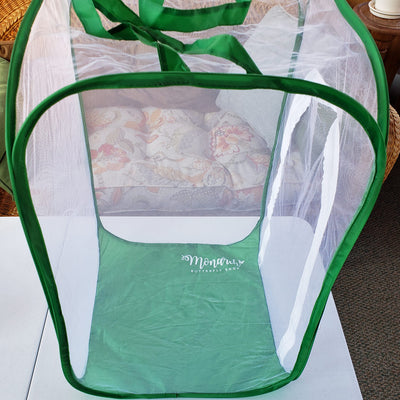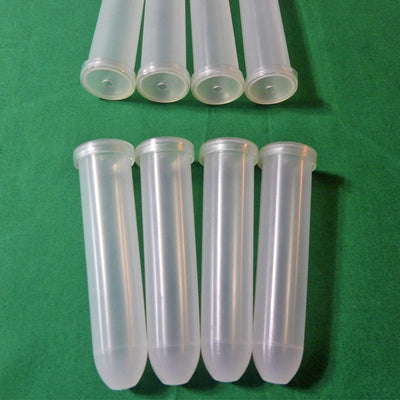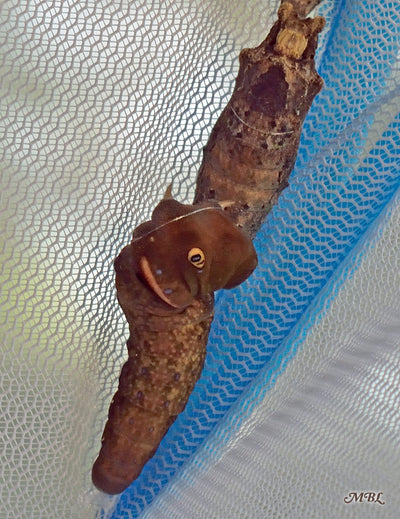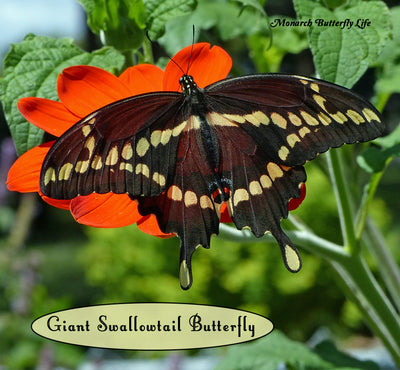Raising Butterflies Blog
Care Tips for Baby Caterpillars- Raise Healthy Monarchs
Taking Care of Baby Monarch Caterpillars- Raise The Migration

Now that you’ve prepared to raise monarchs, these next steps take less time and allow you to enjoy this magical transformation as a curious spectator. You may be surprised to hear that rearing baby caterpillars is easy…but only if you have a good system in place for growing them through the second stage of the monarch butterfly life cycle.
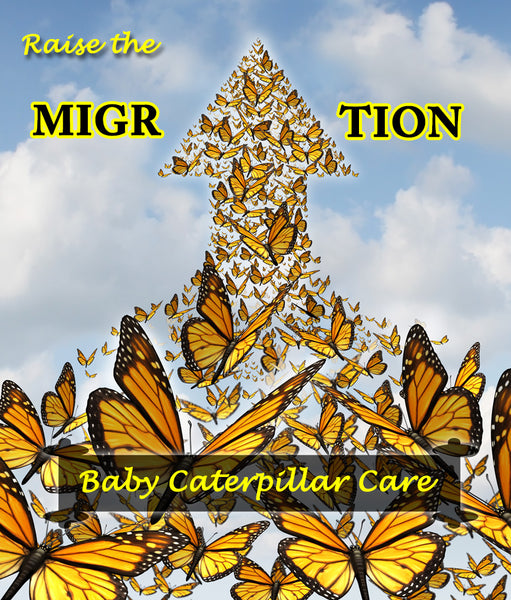
From Egg to Caterpillar
Just before your eggs hatch, the monarch egg will start to darken. This signifies a baby caterpillar is about to emerge, unless…
If the egg turns completely dark, your caterpillar didn’t survive. This macro photography of a monarch egg shows an egg that has been parasitized by trichogramma wasps. The dark-spotted egg signifies the monarch embryo has been destroyed.

To the naked eye, this will appear as a completely dark egg. (Use a magnifying glass to get a better look.)
If you have a dark egg, give it 48 hours to make sure it’s not a viable caterpillar. Then fold the egg inside the leaf and smash it with your fingers. Otherwise, in about 10 days a bunch of tiny wasps could emerge, mate, and start parasitizing more monarch eggs!
An unfertilized monarch egg will take on a different appearance. It will remain cream-colored, but…
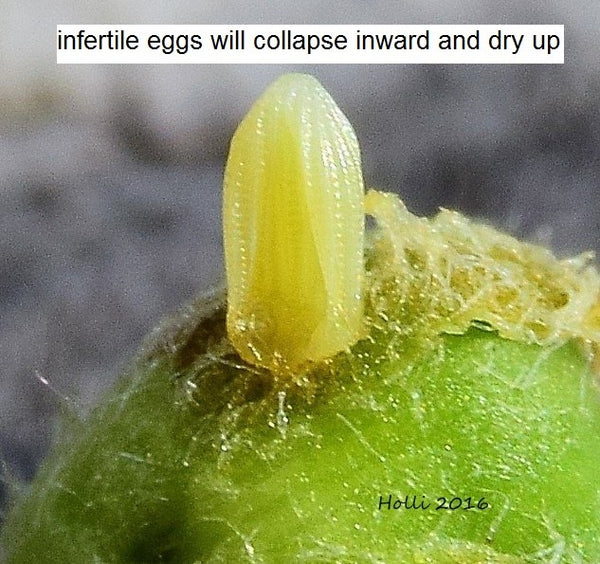
A monarch female is more likely to lay unfertilized eggs at the beginning of the season when mates are scarce and at the very end when cool temps stop monarch mating cold in its tracks…
Getting back to a happier place, a healthy monarch egg will start to turn dark only at the top…this is actually the caterpillar’s head about to make its grand entrance into the world.


After your baby caterpillars emerge their first meal will be their nutrient-rich shell.
Fun Fact: baby monarch caterpillars measure less than 1/10″ upon hatching.

Many of you will have a hard time seeing these tiny caterpillars, and that’s why its a good idea to have them in food containers where you can leave them until you can 👀 them…another time when your magnifying glass will come in handy!
Hatching Caterpillars in Containers
As soon as a baby caterpillar hatches, remove it (on its leaf piece) and put it inside a second food storage container pre-lined with a dry paper towel, and a large fresh milkweed leaf or leaves. Make sure these leaves have been thoroughly rinsed with water before serving.
Place a manageable number of caterpillars inside these new containers…I would suggest 4-6 caterpillars per container. You can discard the leaf pieces as the caterpillars desert them for the fresh food beneath.
You might want to throw the deserted leaves in another food container labeled trash to insure you aren’t accidentally throwing out a tiny egg or baby caterpillar! 🐛 Check inside the trash container periodically for evidence of leaf munching, and perhaps a small HELP message written in milkweed sap 😉
For the next few days, check on your hatchlings daily and mist milkweed lightly only if the leaves are drying out before closing the container. By misting lightly, I mean a couple short sprays from a spray bottle. Excess moisture can cause monarch-killing mold.
We typically only have to spray once before transferring caterpillars to a larger cage because sealed containers hold in moisture.
Hatching Cats on Milkweed Cuttings & Plants
If your eggs are on cuttings or plants, the caterpillars will be fine to feed on those for days, and possibly up to a week! Here’s a caterpillar that is still feasting on the same cutting it was deposited by mother monarch:

Even though baby caterpillars are hard to 👀 on cuttings/plants, they’ll leave plenty of evidence that they’ve emerged and are starting to grow:

Water for Baby Caterpillars
It doesn’t matter how you spray their fresh green leaves before your caterpillars hatch, but after hatching is a different story. Using the wrong spray technique can kill your caterpillars by launching them off the milkweed to places only seen by superheroes with x-ray vision…
To avoid this tragedy:
1. Spray the plants while they are inside the cage or have cutting containers on a boot tray where you can easily see them if they fall.
2. Mist the milkweed plants from above so water mist rains down on them. Spray up, and let the water gently fall down on the occupied milkweed. (Since mesh cages have good air circulation you can mist plants daily.)
There is still a slight chance they could fall but they will fall straight down instead of blasting sideways off your plant. They will be usually be hanging from a self-spun silk thread if they fall straight down, and can climb back up it….like mini marvel spider-men!
It’s a good idea to have single milkweed leaves on the cage floor in case caterpillars fall during spraying or wander from the plant. Keep the leaves slightly away from the cuttings/plants so they don’t collect falling frass. 💩
Changing the Cuttings

If your cuttings are taking up water properly they will last until they are completely devoured. This is the system we use to keep cuttings fresh for growing caterpillars:
Click Here for More Info on Using Stem Cuttings to Feed Monarch Caterpillars
By the time they are done with their first cuttings or potted plants, they should be at least instar 2 caterpillars (3/10″) and easier to see than the mini-monarchs that hatched just days earlier.
Cuttings Tip: prepare your cuttings the night before you plan to use them to make sure they are taking in water. Once you become skilled with cuttings, you can take them as you use them.
Picking Up Baby Caterpillars?
Although carefully handling caterpillars won’t hurt them, there are safer ways to move them…
When transferring caterpillars from your food containers, cut off a small leaf piece with a caterpillar, and place it on a new plant or cutting like this…

Small caterpillars already on plants/cuttings should have no problems crawling to new cuttings. Just place their current container or floral tube next to a new one:

You can also place a small pot inside a larger one:

If the baby cats are having issues finding the new food supply, some raisers have reported success moving them over with a soft-bristle paint brush. Community member Carolyn M. reminded me, you can usually coax them to crawl on the tip or side of a milkweed leaf.
That being said, monarchs have been going through this amazing metamorphosis for centuries. If you give them some time, and a little wiggle room, they can usually figure things out on their own…
For further assistance with baby caterpillars and raising healthy monarchs through the butterfly life cycle, our ✬✬✬✬✬ rated How To Raise More Monarchs, with Less Effort is available for purchase HERE<<< (choose paperback or PDF download)


